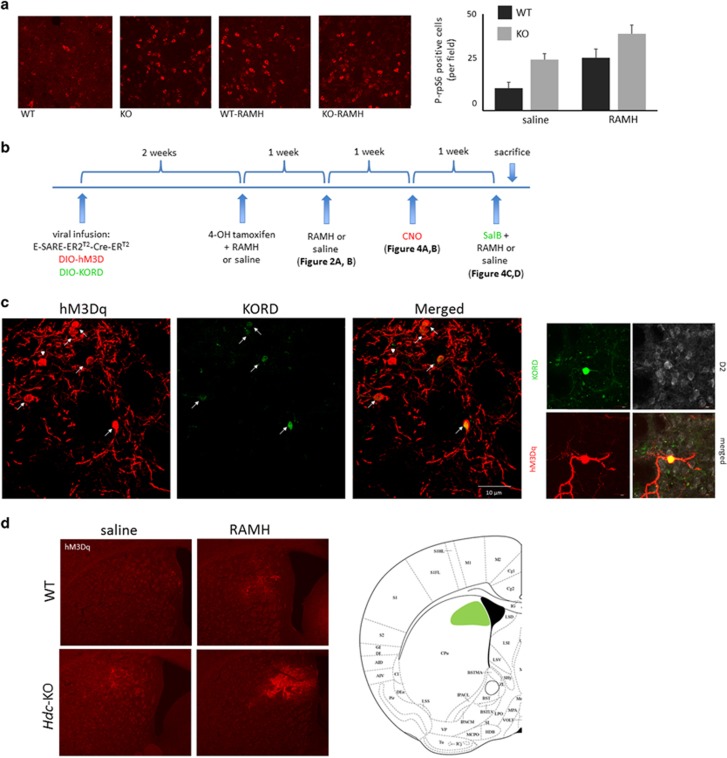Figure 3.
DREADD tagging of RAMH-activated cells in dorsal striatum. (a) RAMH leads to cell activation in the dorsal striatum. Representative confocal images of immunostaining for P-S235/236-rpS6 in the dorsal striatum are shown for each condition. Immunopositive cells from Z-stacks through the dorsal striatum were counted, blind to experimental condition; there was a main effect of both genotype and RAMH. N=8 WTsaline, N=8 WTRAMH, N=8 HDC-KOsaline, N=8 HDC-KORAMH. 2 × 2 analysis of variance: main effect of genotype, F[1,28]=15.7, P=0.0005; main effect of treatment, F[1,28]=13.8, P=0.0009; interaction, F[1,28]=0.10, P=0.75. (b) Strategy for dual tagging of activated dorsal striatal cells and subsequent behavioral testing. Tagging of activated dorsal striatal cells for subsequent chemogenetic regulation was accomplished by injection of virus expressing TMX-activated Cre recombinase under the activity-regulated E-SARE promoter together with Cre-activated viruses expressing the hM3D and KORD DREADDs. (c) Confocal imaging documented co-expression of hM3Dq and KORD DREADDs (left, × 40); higher-magnification of a single cell, together with immunostaining for the Myc tag that is expressed in D2 neurons in these mice (right, × 60). (d) Low-magnification fluorescent images of hM3Dq DREADD document typical spread and level of expression in the dorsal striatum in all experimental groups (× 4 magnification). A composite depiction of viral spread in all animals in the KO-RAMH group, which shows the highest expression of the DREADD receptor and is the critical group for subsequent behavioral analysis, is shown. DREADD, designer receptors exclusively activated by designer drugs; RAMH, R-aminomethylhistamine.

